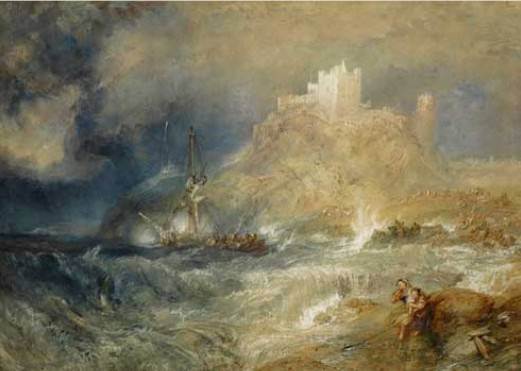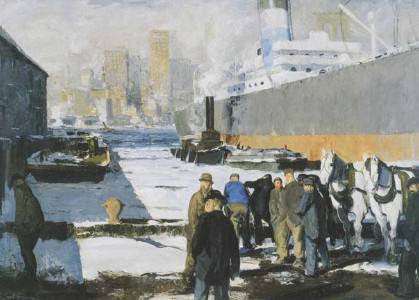
Turner: Bamborough Castle
Turner’s Bamborough Castle to be sold at Sotheby’s Turner’s lost masterpiece Bamborough Castle to be sold at Sotheby’s, December 2007. One of the finest watercolors in the world]]>
November 2007, source: Sotheby’s
JOSEPH MALLORD WILLIAM TURNER, R.A. (1775-1851) is Britain’s greatest watercolourist and the last few years have seen him take centre stage like never before. In July of this year Sotheby’s offered for sale the Ullens Collection, the finest collection of privately-owned Turner watercolours to have come to the market in living memory, which saw the artist’s Lungernzee realise £3.6 million. Hot on the heels of this, a major exhibition entitled J.M.W.Turner has just opened at the National Gallery of Art in Washington D.C. This actually follows record new prices in 2006 when one of Turner’s Venice masterpieces sold for $35.8 million in New York while his The Blue Rigi fetched £5.8 million in London. Now Sotheby’s London is delighted to announce that it will continue the Turner focus, offering the artist’s lost masterpiece, Bamborough Castle, on Wednesday, December 5, 2007. Described by the Graphic Society in 1837 as “one of the finest watercolour-drawings in the world” this major work looks set to generate huge excitement in the academic and collecting worlds alike. It is expected to fetch in excess of £1.5 million.
Dating from the mid 1830s, Turner’s Bamborough Castle has spent most of its life to date in the possession of a distinguished private collection and, remarkably, it has not been seen on the open market since 1872 – some 135 years. In 1872 it was sold as part of the Joseph Gillott collection in London and realised £3,309, the highest price ever achieved for a watercolour at the time. The Earl of Dudley was the purchaser on this occasion but later – in about 1890 – the picture passed into the hands of one of the great American collecting families, that of the Vanderbilts. The Vanderbilt family played a significant role in the history of the United States; they built a shipping and railroad empire during the 19th century which made them one of the wealthiest families in the world. Since entering the collection of Mrs Cornelius Vanderbilt, the watercolour has passed down through successive generations of the family while the outside world has remained mystified as to its whereabouts. Listed as untraced in Andrew Wilton’s Catalogue of Turner Watercolours published in 1979, the work has not been seen in public since 1889.
Research on the painting is still in progress, but it is possible that the work may shed new light on Turner’s working practices. It seems, for instance, that here Turner has backed the sheet of paper with two further laminated sheets – no doubt to strengthen the paper but also, possibly to intensify the colours he used. More details about the fascinating work, and the story behind it, will be revealed over the coming months.
Follow us on:


